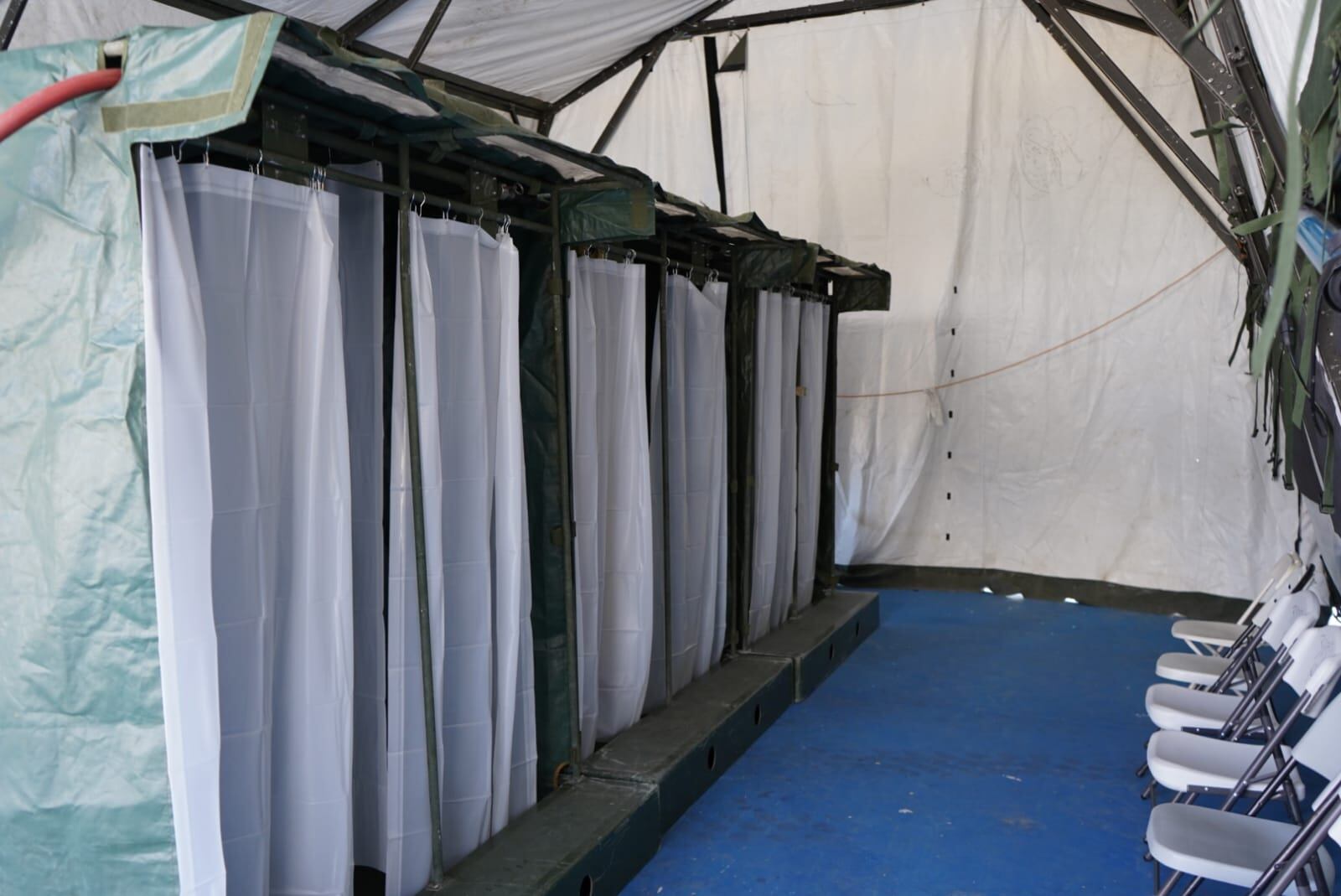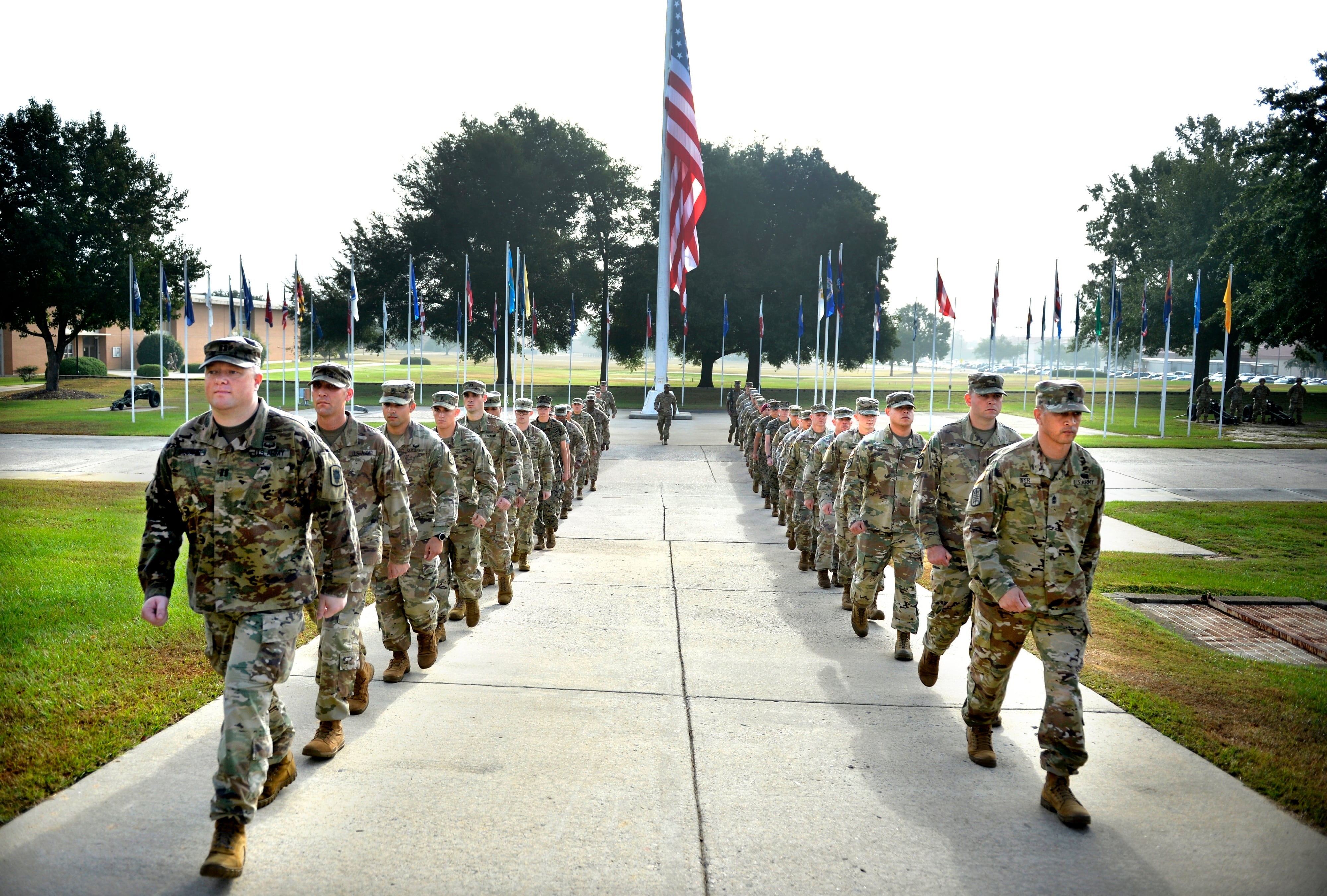Assets of the U.S. Army Reserve 1st Mission Support Command from Fort Buchanan, Puerto Rico, have been activated to support relief and recovery efforts on the island following a string of strong earthquakes.
Around 150 soldiers from the 430th Quartermaster Company and the 268th Transportation Company have deployed to provide laundry and shower services for civilians at five locations along the southern coast.
The locations for displaced civilians at Guanica, Guayanilla, Yauco, Peñuelas and Ponce are capable of holding 1,000 to 1,500 people each, according to officials. Each site has two shower systems capable of accommodating 500 people per day, as well as laundry systems capable of washing 400 pounds of laundry per cycle.

Earlier this month, a 6.4-magnitude quake rocked the island, followed by aftershocks of similar magnitudes, prompting Governor Wanda Vásquez to activate the National Guard.
More than 1,280 earthquakes have hit Puerto Rico’s southern region since Dec. 28, more than two dozen of them magnitude 4.5 or greater, according to the U.S. Geological Survey. Government officials say the quakes have caused a preliminary $110 million in damage, toppled part of a famed rock formation landmark and damaged or destroyed more than 550 homes.
“This has been a continuing effort; it’s not just one earthquake that has happened,” Brig. Gen. Jeffrey W. Jurasek, commanding general of 1st Mission Support Command and the senior federal Army officer in the region, told Military Times. “We are getting two or three [earthquakes] a day of varying magnitudes.”
In 2017, Puerto Rico was battered by Hurricanes Irma and Maria, but the White House held up most of the disaster relief funds authorized by Congress, citing public corruption and government mismanagement. On Wednesday, the administration reportedly released over $8 billion in relief aid and $8 billion in prevention aid with new restrictions, such as a federal oversight board, according to the Washington Post.
The Reserve components were activated to support the ongoing response spearheaded by the National Guard and the U.S. Federal Emergency Management Agency.
“When we got the mission assignment, we were able to pull our guys together, get them loaded and out the door in 12 hours or less. We are pretty responsive,” Jurasek added.
Officials estimate that about 6,000 civilians remain displaced, often in fear of returning to their homes in case of more temblors. Some 200,000 homes across Puerto Rico are not built to code and are vulnerable to collapses.
Experts say the likeliest scenario is that the frequency of aftershocks will decrease in the next 30 days, noting that moderately sized ones could still further damage structures. A less likely scenario is another earthquake just as strong as the 6.4 one occurs in the same area, an event known as a doublet. A much less likely scenario is that an earthquake significantly larger than the 6.4 one hits Puerto Rico.
Military officials, however, are preparing for the worst-case scenario and hoping for the best.
“If we had another major earthquake that affected San Juan, and we had millions of people that are affected, we are doing planning to be called up immediately to assist,” Jurasek said. “There is one, unified point to take care of the citizens of Puerto Rico. They are at the heart of everything we do.”
Many of the reservists from 1st Mission Support Command were born and raised in Puerto Rico, and while they have deployed throughout the Caribbean and to places like the Middle East, there are added emotions to mobilizing on site and assisting members of their own communities.
The U.S. Army Reserve expects to support Guard and FEMA operations for three to four more weeks.
The Associated Press contributed to this story
Dylan Gresik is a reporting intern for Military Times through Northwestern University's Journalism Residency program.





